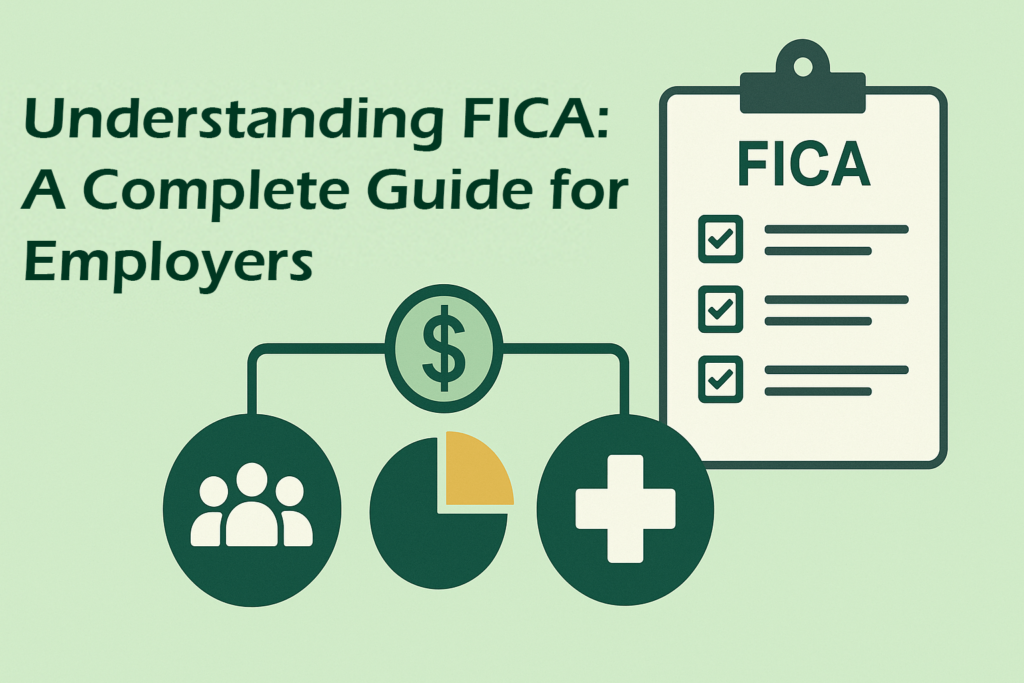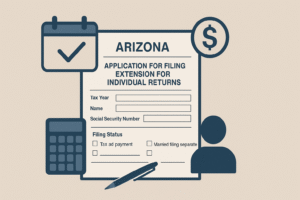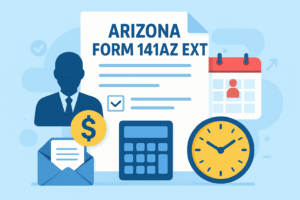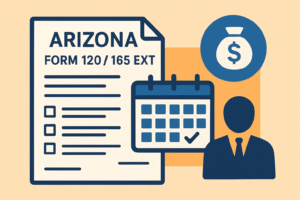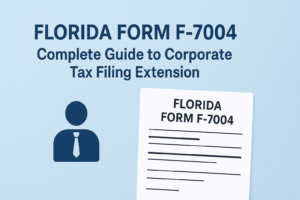When managing payroll, few responsibilities are as crucial as handling FICA taxes correctly. The Federal Insurance Contributions Act (FICA) funds two essential federal programs: Social Security and Medicare. Employers must withhold these taxes from employee wages and contribute a matching portion.
Let’s break down everything employers need to know about FICA—from withholding rules and contribution rates to exemptions and reporting duties.
What Is the FICA Withholding Process?
FICA requires employers to withhold taxes from each employee’s paycheck and match the amount for both Social Security and Medicare. These taxes support retirement benefits, disability income, survivorship, and healthcare for seniors.
💡 Quick Tip: Employers should ensure their payroll system automatically calculates and separates FICA taxes for accuracy.
FICA Tax Rates: Social Security and Medicare Explained
As of 2025, the total FICA tax rate is 15.3%, split equally between employer and employee. Here’s how it breaks down:
| Tax Type | Employee Rate | Employer Rate | Wage Base Limit |
| Social Security | 6.2% | 6.2% | $168,600 |
| Medicare | 1.45% | 1.45% | No limit |
Additional Medicare Tax: Employees earning over $200,000 in a calendar year are subject to an extra 0.9%, which is not matched by employers.
📊 Stat to Know: The maximum Social Security tax withheld from an employee in 2025 is $10,459.20 (6.2% of $168,600).
FICA Tax Examples
Example 1:
An employee earns $60,000 annually.
- Social Security withheld: $60,000 × 6.2% = $3,720
- Medicare withheld: $60,000 × 1.45% = $870
- Total employee withholding: $4,590
- Employer matches: $4,590
Example 2:
An employee earns $180,000 annually.
- Social Security: Only first $168,600 is taxed → $10,459.20
- Medicare on full $180,000: $2,610
- Additional Medicare Tax (since $180,000 < $200,000): Not applicable
- Total employee FICA: $13,069.20
- Employer matches (excluding additional Medicare): $13,069.20
The Self-Employed Contributions Act (SECA)
Self-employed individuals pay FICA-equivalent taxes through SECA. Since there’s no employer to match, they pay the full 15.3% themselves:
- 12.4% for Social Security
- 2.9% for Medicare
They can deduct the employer-equivalent portion (7.65%) when calculating their adjusted gross income.
FICA Tax Exemptions
While most employees are subject to FICA, a few exemptions exist:
- Certain nonresident aliens, such as some foreign students and teachers
- Members of specific religious sects with IRS-approved exemptions
- Students working at the same school they attend
💡 Quick Tip: Don’t assume someone is exempt—confirm eligibility with IRS guidance before skipping FICA withholding.
FAQs About FICA Taxes
Can Employers Write Off FICA Taxes?
Yes. Employers can deduct their share of FICA taxes as a business expense on their federal income tax return.
➡️ Employers are also responsible for withholding the employee’s share of FICA taxes from their wages, but only the employer’s share is tax-deductible.
Can Employees Deduct FICA Taxes?
No. Employees cannot claim FICA taxes as deductions since they are statutory withholdings.
Do Employers Pay FICA Taxes on Employee Tips?
Yes. Employers must withhold and match FICA taxes on reported tips. Employees are required to report monthly tips exceeding $20.
💡 Quick Tip: Encourage timely tip reporting using Form 4070 or an electronic equivalent.
Are There Additional Employer Responsibilities for FICA Taxes?
Yes. Employers must:
- Deposit FICA taxes on time via EFTPS
- File Form 941 quarterly (or Form 944 annually for eligible small employers)
- Provide Forms W-2 to employees and file W-3 with the SSA
What If an Employee Works for Two Corporations that Are Related to Each Other?
If an employee works for two or more related corporations, each company is normally treated as a separate employer for FICA purposes. This means each entity must withhold and pay Social Security tax up to the annual wage base, potentially leading to duplicate Social Security taxes being paid on the same wages.
However, employers can avoid this issue by using the Common Paymaster Rule, which allows one corporation to be designated as the sole FICA withholding agent for shared employees.
What Is the FICA Common Paymaster Rule?
The FICA Common Paymaster Rule allows related corporations to treat one of them as the only employer for FICA purposes—but only for employees who work for both entities during the same payroll period.
Under this rule:
- Only one employer withholds and pays FICA taxes on the shared wages
- The Social Security wage base applies only once, avoiding overpayment
- Employers must have a valid agreement and meet IRS rules to apply this treatment
💡 Quick Tip: This rule is especially beneficial for high-earning employees working across related companies—saving on excess employer-side taxes.
What If an Employer Withholds Too Much FICA Tax from an Employee’s Pay?
- If the employer made the error, they are responsible for issuing a refund or adjusting future withholdings.
- If excess FICA was withheld because the employee worked for multiple employers, the employee can claim a credit for the overpaid Social Security tax on their Form 1040.
How Do You Pay and Report FICA Taxes?
FICA tax deposits must be made electronically via EFTPS—either monthly or semi-weekly, based on your deposit schedule.
Employers must also:
- File Form 941 quarterly to report wages and tax withholdings
- Provide W-2s to employees and submit W-3 to SSA annually
- Use Form 944 if approved by the IRS for annual FICA reporting
📌 Penalty Alert: Late deposits can incur penalties from 2% to 15%, depending on how late the payment is made.
Conclusion
FICA taxes are more than just a payroll formality—they’re a legal obligation and a financial lifeline for millions of Americans. For employers, staying compliant means understanding withholding rules, monitoring wage limits, and reporting on time. With accurate payroll systems and awareness of current rates, FICA can be managed smoothly—helping both business operations and employee trust.

